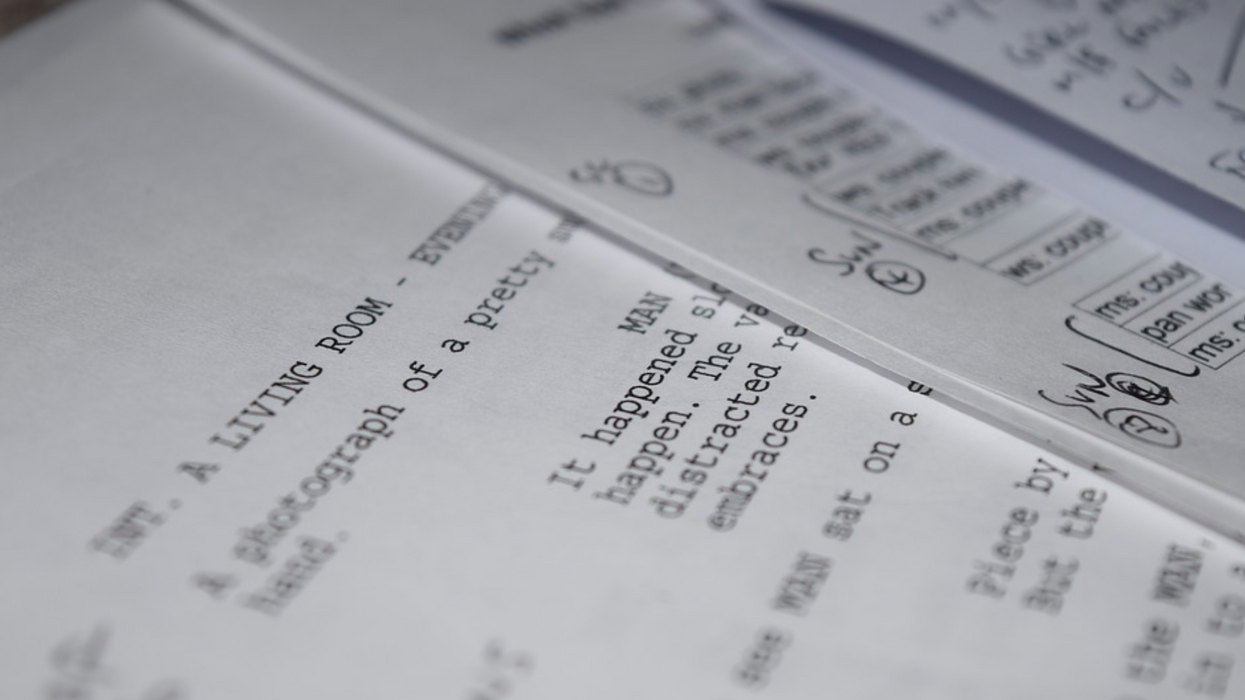Read Scripts, Watch Movies, Write Pages: the Scott Myers 1,2,7,14 Formula

Screenwriter Scott Myers was featured a while back on No Film School because of a contest of sorts that he started called "The Quest," where anyone was allowed to submit as many of their original movie loglines as they wanted. Even if you didn't participate, Scott has a clever idea about staying productive as a screenwriter. This "numerical idea" is all about reading scripts, watching movies, and writing pages.
Here is the explanation for the 1,2,4,14 formula:
- 1: Read 1 screenplay per week.
- 2: Watch 2 movies per week.
- 7: Write 7 pages per week.
- 14: Work 14 hours per week prepping a story.
The first three are somewhat self-explanatory. Scott recommends reading any screenplays, from all different genres -- even genres or films you might not like. You should also watch at least 2 movies per week (though I'd recommend more), and study the way the stories are put together, from the inciting incident all the way through the major plot points and the climax. Figure out where these events happen in the movie and how they work to advance the story. Write 7 pages per week for whatever story you're working on. Lastly, and probably the most time-consuming, is to work 14 hours a week prepping a story. Here Scott explains that step, which he refers to as stacking projects:
While you are writing one story, you are prepping another. Research. Brainstorming. Character development. Plotting. Wake up early. Take an extended lunch break. Grab a few hours after dinner. Stay up late. Whatever it takes, carve out 2 hours per day for story prep. Create a master file Word doc. Or use a spiral notebook. Put everything you come up with into that file. You’d be amazed how much content you will generate in a month. Most professional screenwriters juggle multiple projects at the same time. Here’s how you can start learning that skill-set: Writing one project, prepping another. Two hours per day so that every week, you devote 14 hours to prep.
The only way to become a better writer is to write. That may seem simple enough, but good writing does not come from watching good movies, it comes from hard work and dedication -- putting the fingers to the keyboard (or pen to paper if you are old school about your process). Simply writing will not necessarily make your scripts better -- you've got to understand the structure intimately and study other scripts to see how professionals work through problems to craft excellent screenplays.
If you follow this formula, the amount of work you can get done is truly inspiring:
If you do this, here’s what you will have done in one year’s time:
You will have read 52 screenplays.
You will have watched 104 movies
You will have written 2 feature-length screenplays.
Spread that out over 5 years: 260 screenplays, 520 movies, 10 original screenplays.
So what are you waiting for? Start reading scripts, watching movies, and writing pages! If you've got any other helpful tricks or formulas that you use to stay productive, feel free to share them below. If you are a screenwriter and you aren't already reading Scott's blog, Go Into The Story, you are missing out on a treasure trove of knowledge. Follow him on twitter (@GoIntoTheStory) if you like your screenwriting knowledge real-time.
Links: Go Into The Story & Scott Myers on Twitter
[via GITS]











